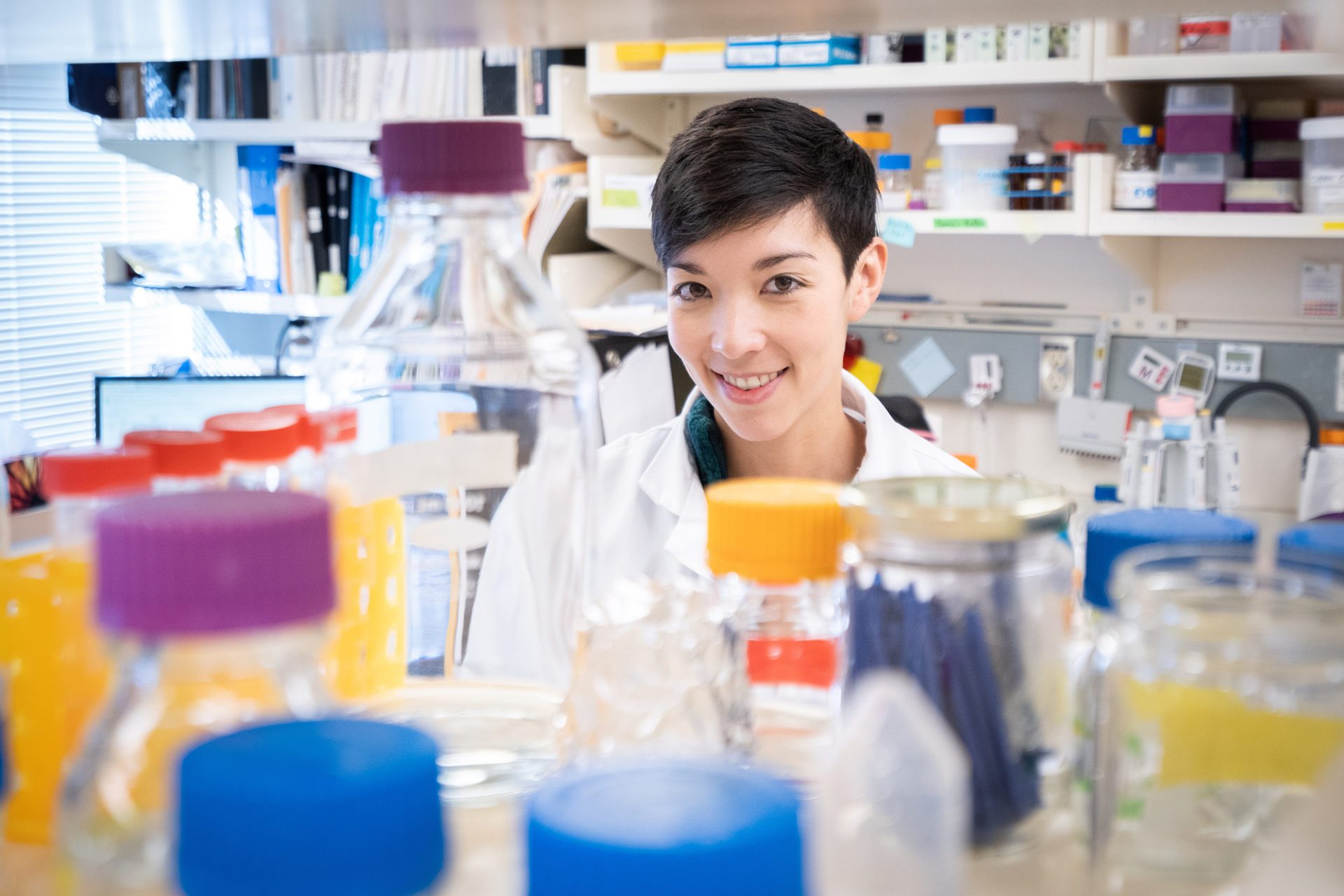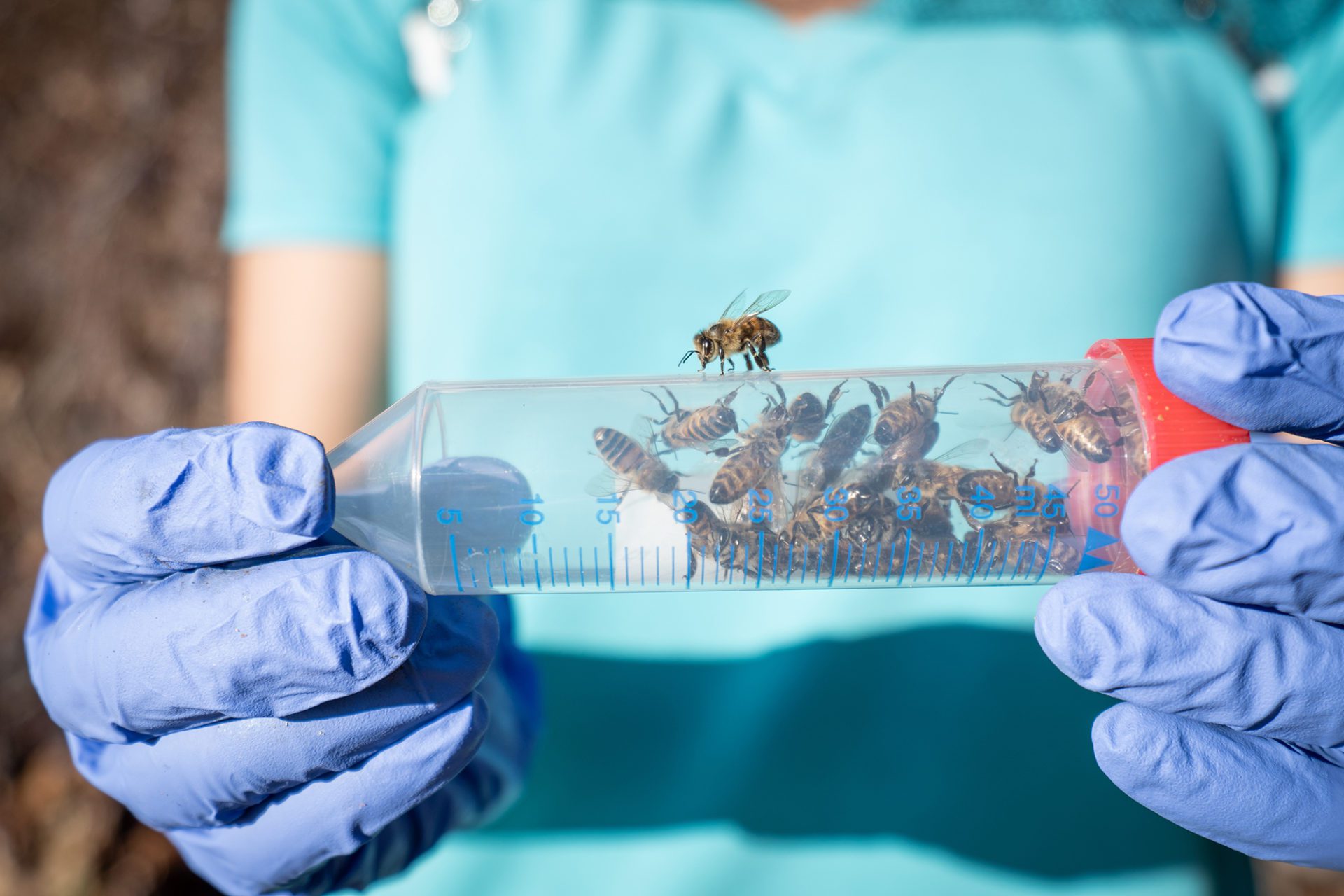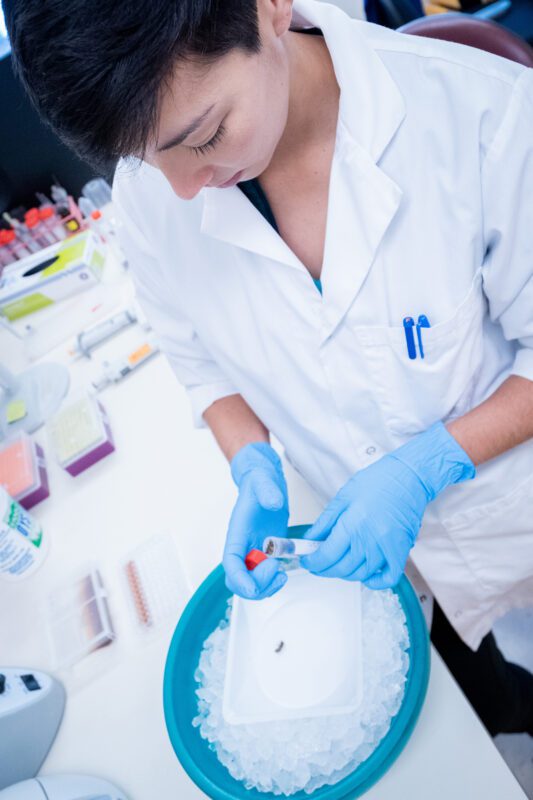Meet the Honey Bee Scientist: Dr. Alison McAfee
Back to Posts
What’s Buzzing with Dr. Alison McAfee
Since the arrival of gene mapping, scientists have amended the classification of bee species several times. The 20,000 or so species that we are aware of were originally placed in eleven different families. This was then whittled down to nine, and then seven, which we remain at today.
Despite their prolific numbers, there is a clear contender for the title of most famous of the bees: Apis mellifera, also known as the western honey bee. When people speak about bees, they are usually speaking of this bee. And it’s not difficult to see why.

Western honey bees are celebrated worldwide for their ability to create the oozing golden liquid their name is derived from. Honey! Working together, a colony of these bees will collect nectar and transform it into honey through a series of carefully orchestrated chemical processes including digestion, regurgitation, enzyme activity and evaporation.
A Sweet History
Scientists estimate bees first appeared around 130 million years ago, after splitting off from a wasp relative, and are thought to have developed the social behaviour they are known for today around 30 million years ago. However, it was only recently on the geological time scale that humans have gotten a taste for honey and began collecting it from bees.
One of the first documented cases of humans collecting honey comes from a cave painting discovered in Spain’s Cuevas de la Araña. Estimated to be around 8,000 years old, it depicts a human figure gathering honey directly from a hive.
Honey is mentioned in the writings of the ancient Egyptians, Assyrians, Chinese, Greeks and Romans, among others. It was the first widespread sweetener, as well as often being used as a form of wound and disease care, currency or offering.
World Honey Bee Day
Honey continues to be enjoyed by people around the world, and we now annually celebrate honey bees with World Honey Bee day on the third Saturday in August.
Created to raise awareness of the contributions honey bees make to our everyday lives, World Honey Bee Day implores people to look beyond honey and discover the extremely important role bees have acting as pollinators in their local ecosystems.
Bees are excellent pollinators as they spend a considerable amount of time moving amongst flowers, inadvertently transferring the pollen that allows for reproduction and seed growth to occur. And their industrious work pays off – studies show that every third spoonful of food we eat and 80 percent of the world’s flowers depend on bees for pollination.* The monetary value of the impact of bees on our planet has been estimated to be as much as $217 billion US ($280 CAN).
*Honey bees receive most of the credit for this work but other, less famous species of bees and pollinating insects also contribute substantially to this figure.
Trouble in Paradise
But honey bees are facing some serious problems.
Colony death is rampant in North America. And while there are four well-studied ‘Ps’ of colony loss – pesticides, poor nutrition, parasites and pathogens – there are other, often overlooked causes of colony death: poor queen and drone quality.
Science Bees
This is where Dr. Alison McAfee (she/her) comes in. McAfee is a postdoctoral fellow in the Department of Applied Ecology at North Carolina State University and the Department of Biochemistry and Molecular Biology at the University of British Columbia. She is also a two-time recipient of prestigious L’Oréal-UNESCO awards — the 2021 Excellence in Research Fellowship and the 2022 Women in Science Rising Talents Award for her work studying honey bee reproductive health.

“Queens only mate during one period when they are very young,” explained McAfee. “They gather all the sperm that they would ever need to fertilize hundreds of thousands of eggs for the rest of their life and store it in a special organ called a spermatheca. Exposure to extreme temperatures will cause the stored sperm to die. This impacts the development of the colony as the queen won’t be able to fertilize enough eggs to build a strong enough worker population.”
And it’s not just the sperm stored in the queen that is susceptible to extreme heat: McAfee has found that the fertility of drone honey bees is also negatively affected by high heat levels. To learn more about how sperm quality may decline, McAfee looks for certain stress biomarkers on queens and drones using proteomics and mass spectrometry. When high levels of the protein biomarkers are found, McAfee matches the results to stressful conditions the bees have been exposed to, including extreme heat and cold.

“Understanding what happens to bees in the environment is critical,” said McAfee. “Being a well-studied and managed species, they serve as an important monitoring tool, revealing what could be happening to other animals, particularly insects. Climate change is one of the driving forces between shifting insect population and abundances, directly affecting their ability to reproduce. Honey bees are a model used to understand what might be happening to wild insect populations.”
To Be(e)come a Woman in Science
McAfee didn’t always know she was going to research honey bees. In fact, originally she wasn’t sure if she wanted to go to grad school at all. She didn’t have many female professors during her undergraduate studies and didn’t feel that a career in the sciences was accessible to her as a woman.
However, thanks to the right encouragement, she continued with her studies and has become the award-winning scientist we know today.
“I’m lucky to have often felt supported as a woman in science. Part of that is due to advisors I’ve had who are champions for changing the balance. I’ve received a lot of support and had people advocating for me. People not only facilitating, but driving me to achieve what I am capable of,” said McAfee.

Now McAfee ensures she is passing that support on to the next generation of women in science. She knows how important representation is, so she shares her story and research in various journals, magazines and podcasts.
“One of the reasons I’ve been so actively engaged in media is for younger people to hear ‘that woman on the radio talking about her science,’ or to read that article in Scientific American by a woman who’s working on this neat biochemistry project. It’s important for younger kids to have a way to access female scientists. It can help inform their decision-making later on when choosing a career path.”
Learn more about Dr. McAfee’s work by visiting her website or following her on Twitter.
SCWIST would like to thank Michael Smith Laboratories for providing the source material for this article.
- Dr. Alison McAfee awarded L’Oréal-UNESCO 2021 Excellence in Research Fellowship
- Dr. Alison McAfee Receives L’Oreal Rising Talents Award
Feature photo credit: Dr. Alison McAfee in the Foster lab, Michael Smith Laboratories, UBC – credit: Leslie Kennah, Michael Smith Laboratories, UBC
Don’t Be(e) a Stranger
- Stay up to date with all the latest SCWIST news and events by connecting with us on LinkedIn, Facebook, Instagram and X, or by subscribing to our newsletter.